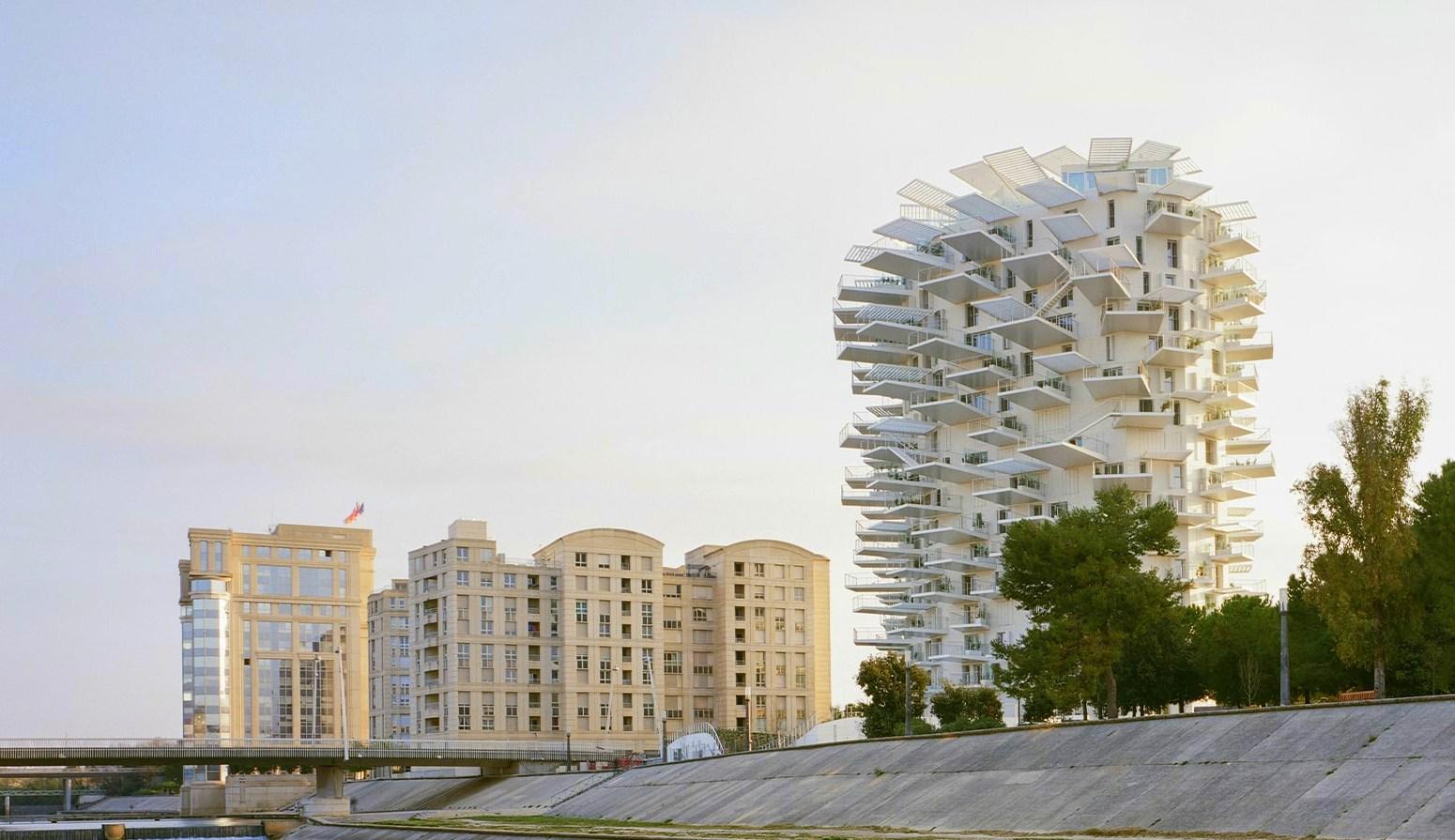Unconventional thinking and techniques are welcome in architecture. For centuries, this genre has experimented boldly with space, aesthetics and comfort, so that the global construction industry never ceases to amaze the inhabitants of different countries with original technical solutions and extraordinary objects. In this way, creators add variety to typical buildings, contrasting them with their urban and natural surroundings and enriching the world's architectural piggy bank. Below are the results of the boundless creativity of architects and designers, when future homeowners are ready to pay for the fruits of their imagination.
L'arbre blanc (France)
The name of this snow-white residential complex in the French city of Montpellier translates as 'white tree'. Inspired by the rich natural surroundings, the project was designed by renowned Japanese architect Su Fujimoto and a team of French colleagues. Montpellier itself, which locals say deserves to be called the capital of the Mediterranean, is located on the coastal arc between Barcelona and Marseille. The main aim of the project, which later became a tourist attraction, was to enrich the city's architectural heritage.
The 17-storey building, more than 50 metres high, with 113 apartments, is located in the heart of this charming corner of France. The obvious highlight of the building is its many balconies, which posed a number of problems for the designers and builders: the external elements had to be light and strong. To ensure the building's seismic and wind resistance, specialists carried out numerous volumetric tests using 3D models and wind tunnels. In addition to the apartments, the complex includes an art gallery, a restaurant and a panoramic rooftop bar with stunning sea views. Upon commissioning, L'arbre blanc was named the world's most beautiful residential building in 2019.
Vivos Europa One (Germany)
The underground complex, with an area of more than 70,000 m2, was built by the American company Vivos for the safety of European millionaires. Carved into the rock, the bunker was originally designed to house Soviet military equipment and is one of the most fortified underground shelters in the world. In particular, it can protect its occupants from the consequences of a nuclear explosion, withstand the direct fall of a heavy aircraft, protect against chemical and bacteriological weapons, neutralise the effects of powerful electromagnetic pulses, as well as natural and man-made disasters.
The facility includes more than 23,000 m2 of equipped living quarters, above-ground offices, warehouses, its own railway depot and allows selected families to live autonomously in the bunker for several years without the need to go to the surface. The interior of the underground complex resembles a luxury yacht and will be customised by the owners. At their disposal: swimming pools, theatres, gyms, libraries, medical facilities, kindergartens, beauty salons and restaurants. The spaces are equipped with autonomous climate control and air filtration, back-up generators and purified water supply. As a result, Vivos Europa One is a luxurious underground resort for respectable individuals, accessible by individual invitation.
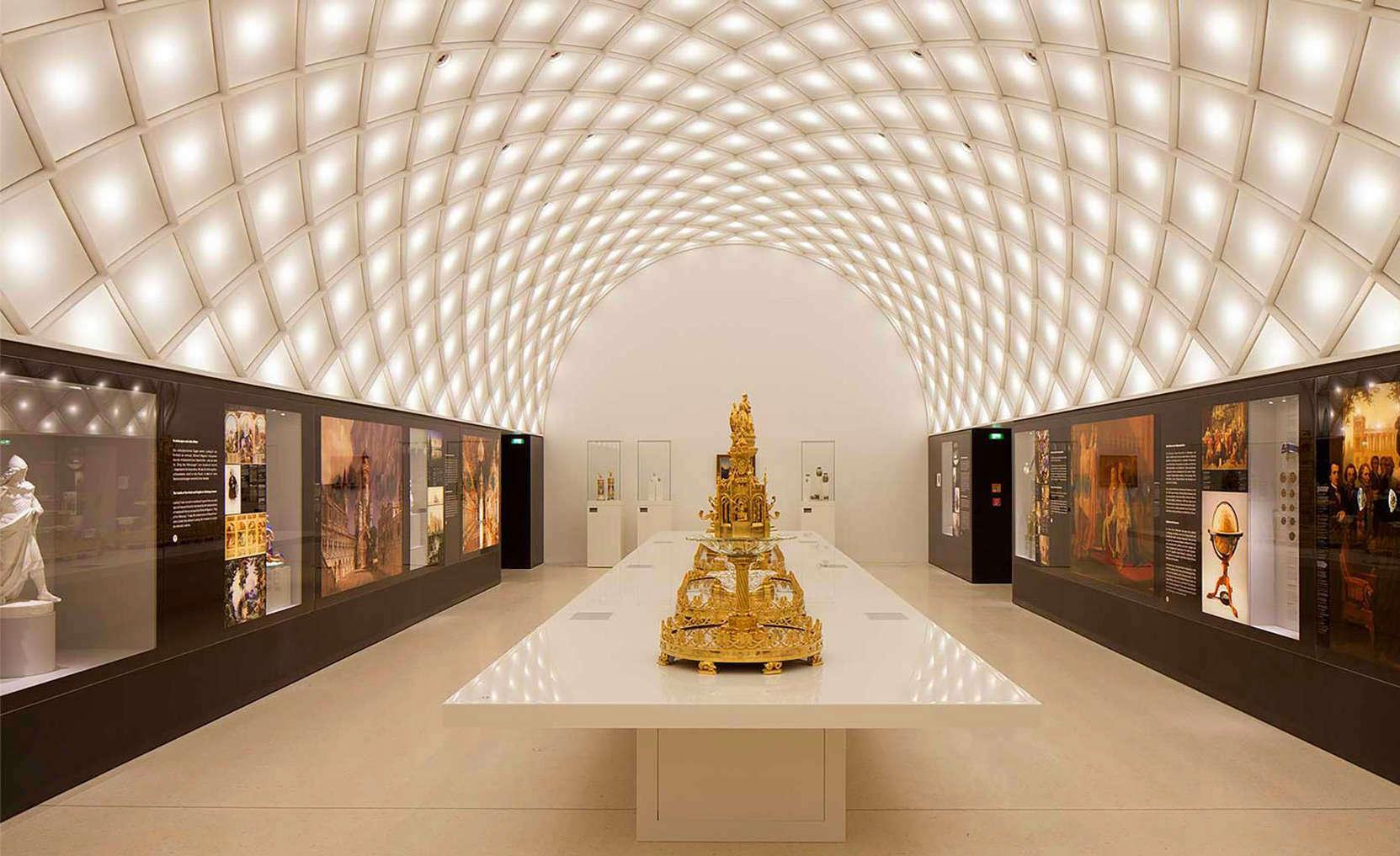
Habitat 67 (Canada)
Built in Montreal on the banks of the St Lawrence River, Habitat 67 is considered one of the world's most amazing housing complexes. The project by the famous Canadian-Israeli architect Moshe Safdie took shape in 1967 for the largest world exhibition of the time - Expo-67. For the record, the author was only 23 years old at the time. With his work, Safdie demonstrated the combination of art and architecture and realised his most daring creative ideas. The complex of the future, as the Canadians called it, was built in the style of Brutalism. The 12-storey Habitat 67 is made up of 354 concrete blocks set at different angles to each other.
The building houses 146 cosy apartments, each with its own terrace and a small ornamental garden on the roof of the neighbours below. The project is built in such a way as to maximise the amount of usable space in a small area. Safdie's arrangement of parkland around the buildings is still relevant today. Habitat was highly acclaimed by experts, as it led many people to look at apartment buildings in a new way, going beyond the canon of boring and monotonous urban cubism. In 2009, the Quebec Ministry of Culture declared the complex a national heritage site.
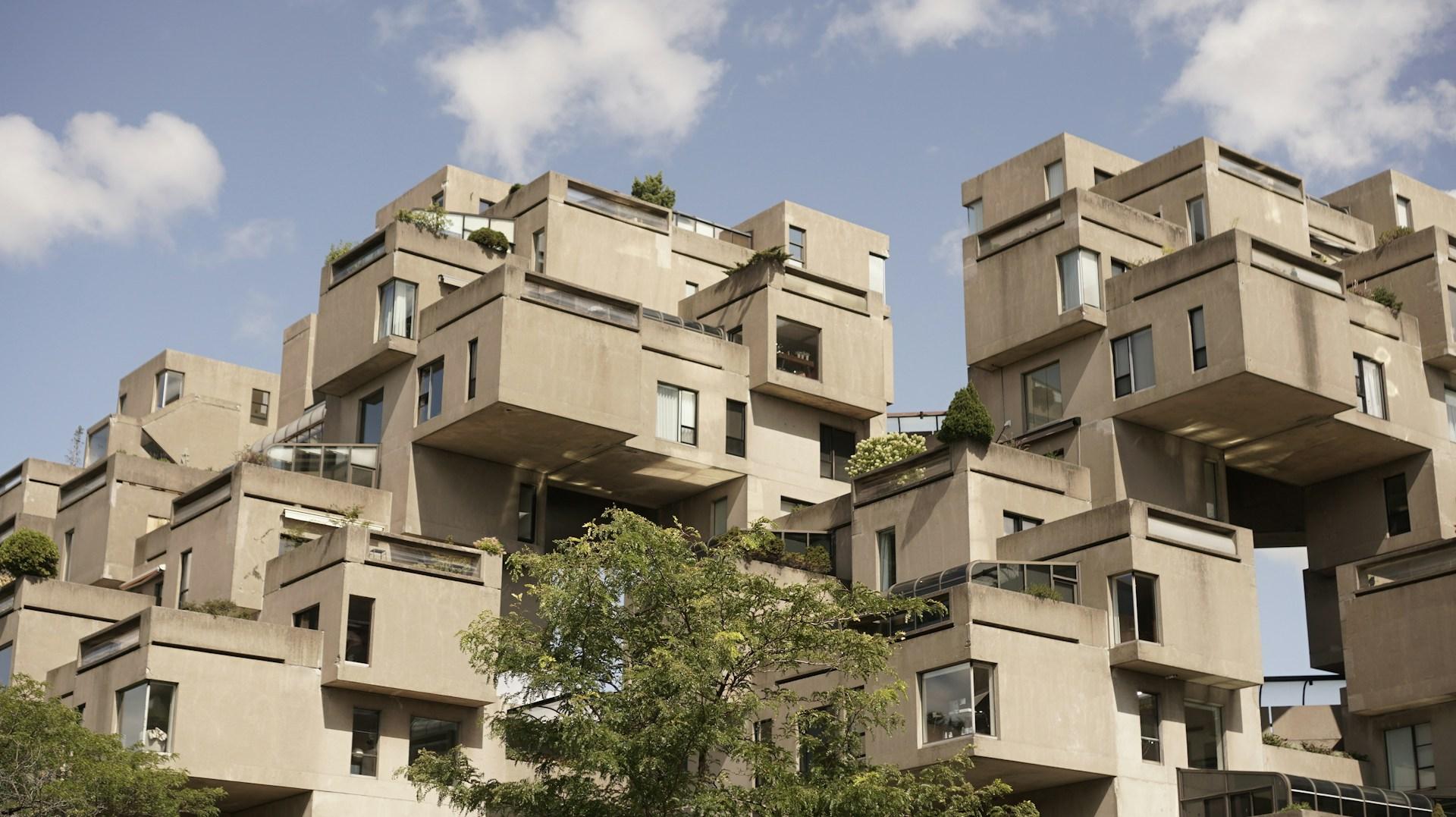
Capital Hill Residence (Russia)
It is not without reason that the construction of this futuristic project is a story of love in stone, or rather glass and concrete. 13 years ago, the Capital Hill Residence was built by Russian billionaire Vladislav Doronin as a wedding present for his beloved - British supermodel Naomi Campbell. In the end, the international marriage never took place - the couple split in 2013, while the house was not completed until 2016, when it was immediately put up for sale. The 35-metre, four-storey mansion, which looks like an alien spaceship, was designed by the famous British architect of Iranian descent, Zaha Hadid.
As a point of reference, the late Hadid's office now carries out commissions for the creation of public buildings - business and sports centres, museums, hospitals. In the case of Doronin, this was the first and only time Zaha undertook to design a private residence. It has a total area of over 2.7 thousand square metres, most of which is underground, with the master bedroom rising above the surrounding trees in the form of a periscope tower. In addition to the residential areas, the complex includes a 20-metre swimming pool, spa and fitness centres, a Japanese garden and a nightclub. Given the fate of the 'spaceship', as it has been dubbed by the people of Barvikha, it is unlikely that anyone else will be able to build anything like it, especially for a world-class star.
Capital Hill Residence on the map
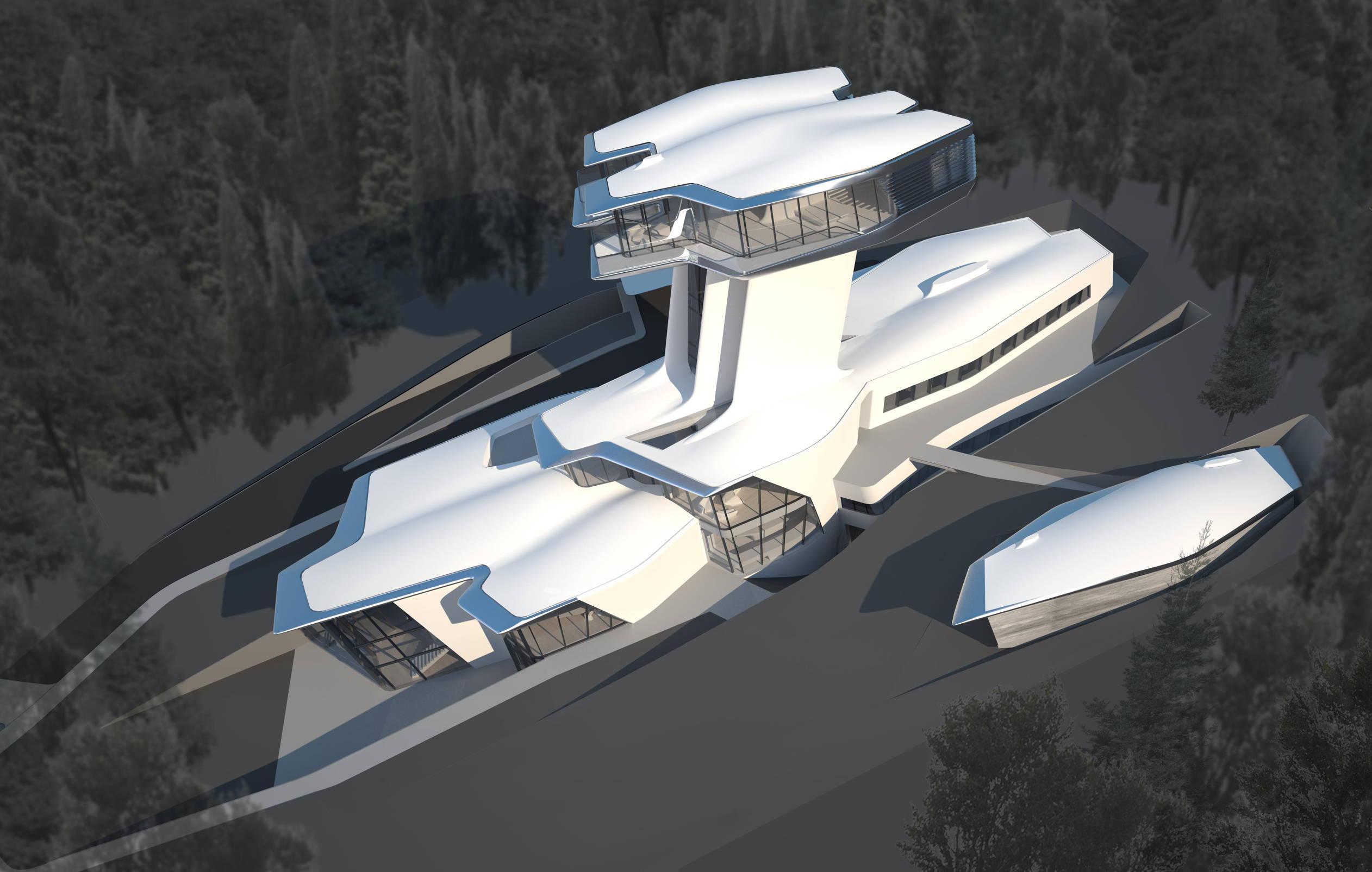
The Wave (Denmark)
One look at this apartment complex is enough to bring the name The Wave to mind. Built in 2011 along the fjord line of the town of Vejle, The Wave was a successful project by renowned Danish architect Jorn Utzon, who was inspired by the famous Sydney Opera House. The construction of the complex of five nine-storey buildings, which resemble restless sea waves, was carried out in several stages, with an interruption caused by the global financial crisis of 2008. The 'waves' are formed by panels of terracotta cladding that form roofs beneath which are two-storey penthouses.
The total surface area of the building is 14,000 m2, with 110 comfortable apartments overlooking the coastal waters. The interiors are designed in a restrained Scandinavian style, with parquet floors extending from the rooms to the balconies. Next to the building there is a promenade with stairs leading down to the sea. The Wave blends harmoniously with the surrounding nature and is considered the main attraction of this small town. The complex has won many prestigious architectural and design awards, including the Vejle Award as the world's best building of 2011.
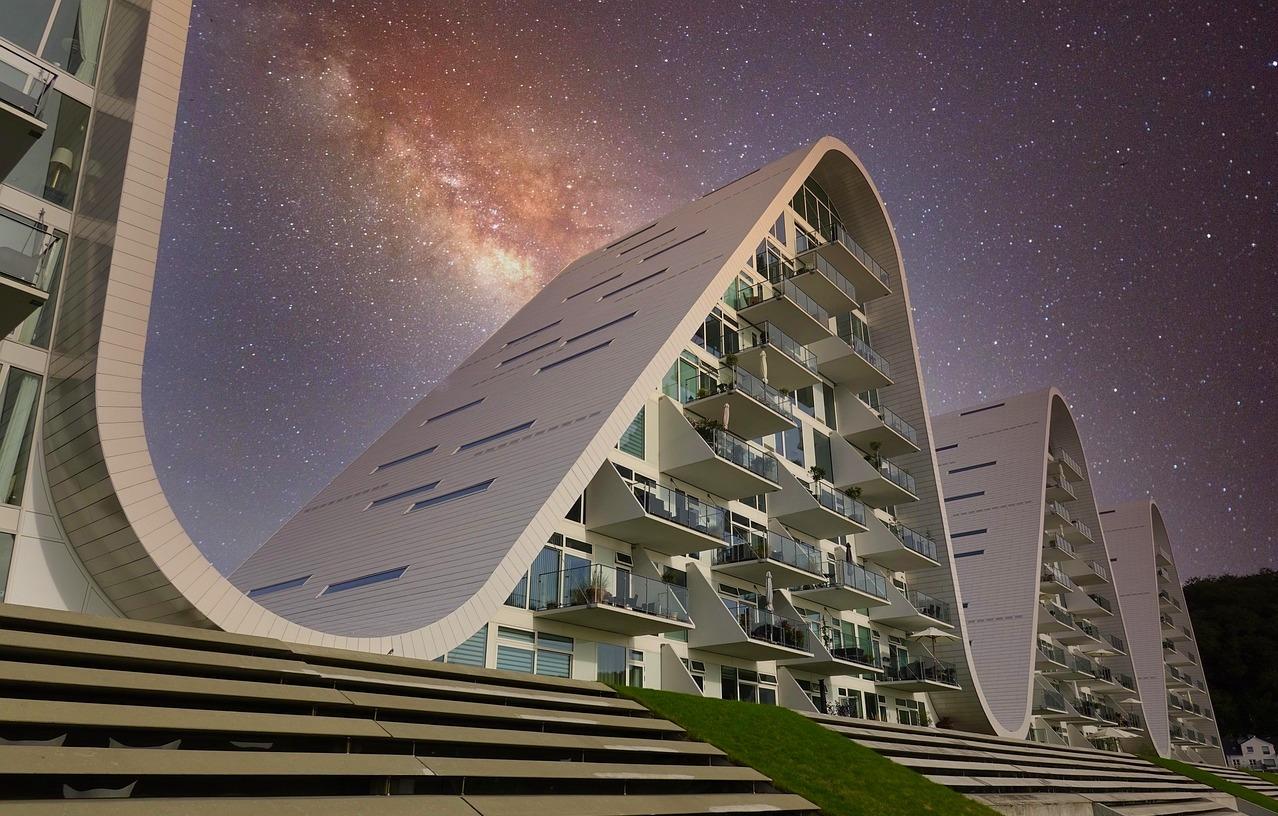
Bubble House (France)
The futuristic Bubble House, recently owned by legendary fashion designer Pierre Cardin, is located near Cannes in the south of France. The 1200m2 complex, which resembles semicircular ancient caves, was built in 1989 to a design by architect Antti Lovag, who did not use straight lines or sharp angles in his work. The history of this extraordinary building is as follows: in the mid-60s, Cardin was looking for a summer house that would suit his style, which was both "chic and cosmic".
He immediately liked the partially built property in Cannes, and after the death of the first owner, the master of world fashion bought the land and developed the building. After the death of the great couturier in December 2020, it was proposed to turn the complex into a public gallery for art exhibitions. Each "bubble" is a separate room with huge portholes overlooking the sea, and the whimsical look of the rooms is accentuated by the pink colour of the interiors. There is a reception hall, a panoramic living room, 10 bedrooms, 11 bathrooms and an open-air amphitheatre. Surrounded by gardens and cascading pools, it has a fairytale atmosphere and is ideal for a relaxing holiday in nature.
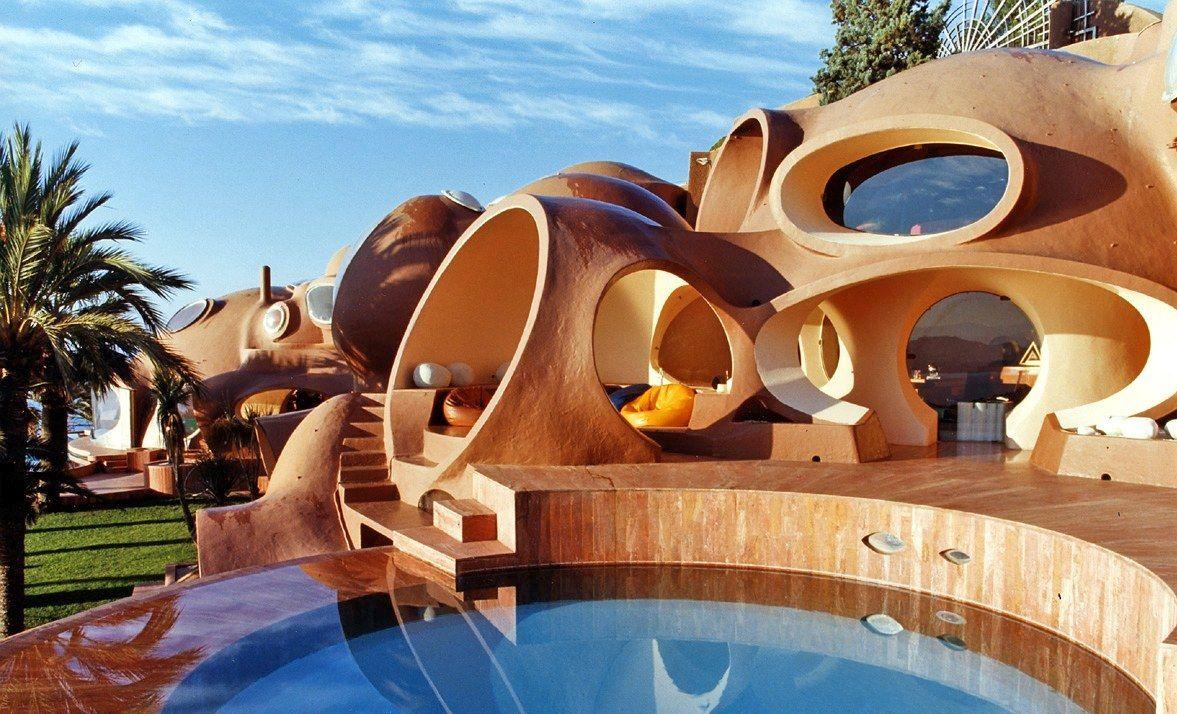
Piano and Violin House (China)
An extraordinary structure called the Piano and Violin House was built in 2007 in the Chinese city of Huainan as an exhibition hall with a musical accent. The project was designed by architecture students from Hefei University of Technology in collaboration with designers from Huainan Decoration Project Co. Designed primarily for music lovers, the Piano House consists of two buildings: the transparent glass 'violin' houses the escalator and main entrance, while the black glass 'piano' houses the halls where anyone can learn about the development plans for the streets and neighbourhoods. Both musical instruments are built to a scale of 50:1, meaning they are 50 times larger than conventional instruments.
The interior has been carefully designed to allow visitors to fully experience the lyrical atmosphere of the music. Large expanses of glass allow maximum natural light into the rooms, and at night the complex glows with the neon outlines of the giant string, bow and keyboard instruments. According to the local authorities, this unusual ensemble was created to draw the attention of Chinese residents and tourists to the newly developing district, where it is undoubtedly the most revered and unique building. Huainan's population of more than one million people is quite taken with the landmark that glorifies their hometown to the world.
Piano and Violin House on the map
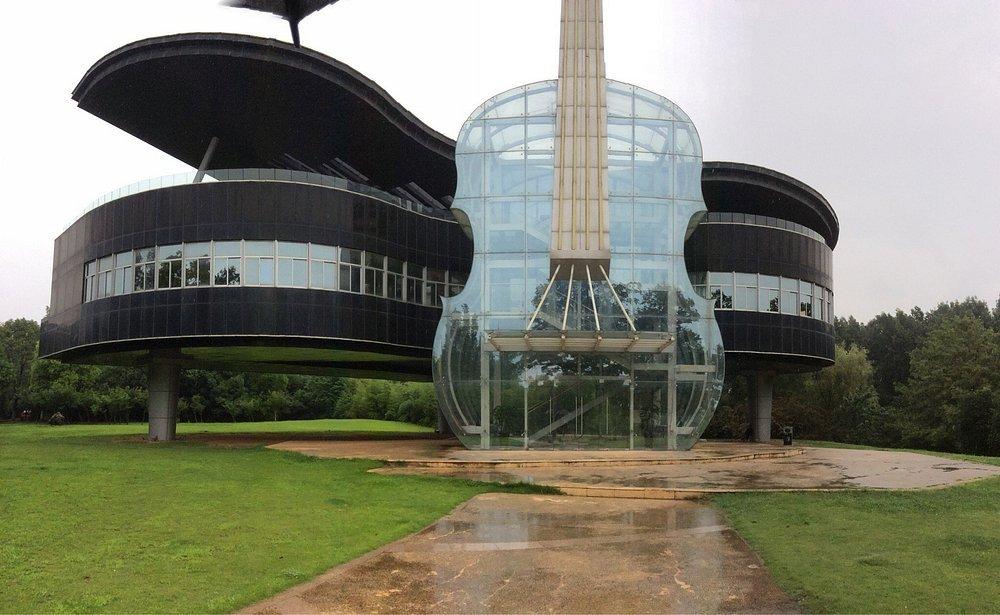
Waldspirale (Germany)
This amusing object, whose name translates as "forest spiral", is a 12-storey residential complex with 105 comfortable apartments. Designed by the Austrian architect Friedensreich Hundertwasser, the horseshoe-shaped building creates a feeling of being lost in time and transported to a parallel fairytale world. Construction of this unique complex began in 1998 and took two years. The façade is adorned with multi-coloured ceramic columns, and inside there are no rectangular shapes, sharp corners or flat lines.
Each apartment has its own door handle, and none of the thousands of windows are repeated. There is also a small crown above each of them, so that the owner feels like the king of his space. Residents will have access to an underground car park, a restaurant and bar, a community centre and a swimming pool. The basic concept of the property is the unity of nature and the urban environment, which is confirmed by the dense grass and a variety of trees on the roof, as well as a small pond in the courtyard where frogs and fish live. Owning a property in the Waldspirale is not just about accommodation, it is about living a fairy tale in the middle of nature.
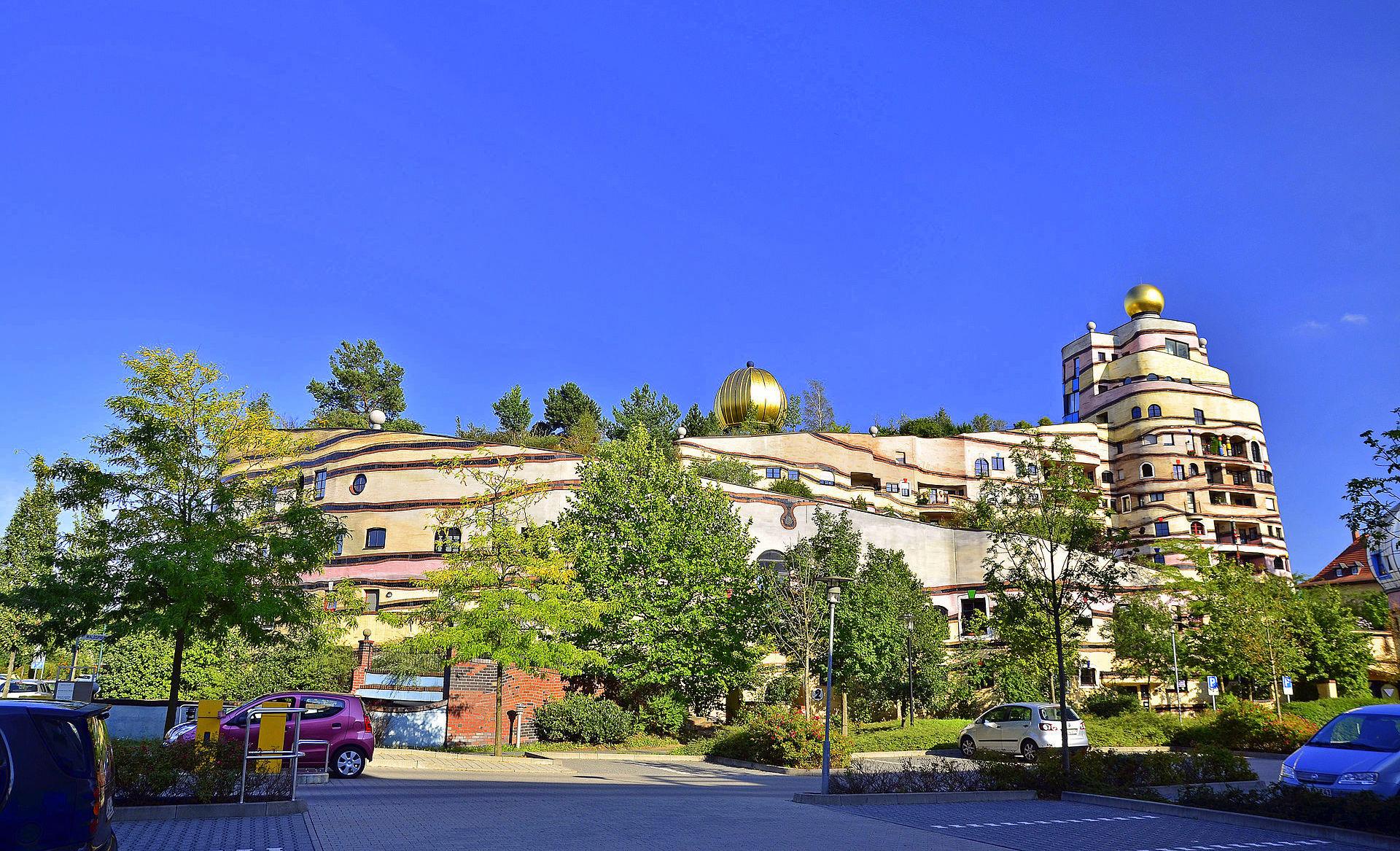
Read also:

